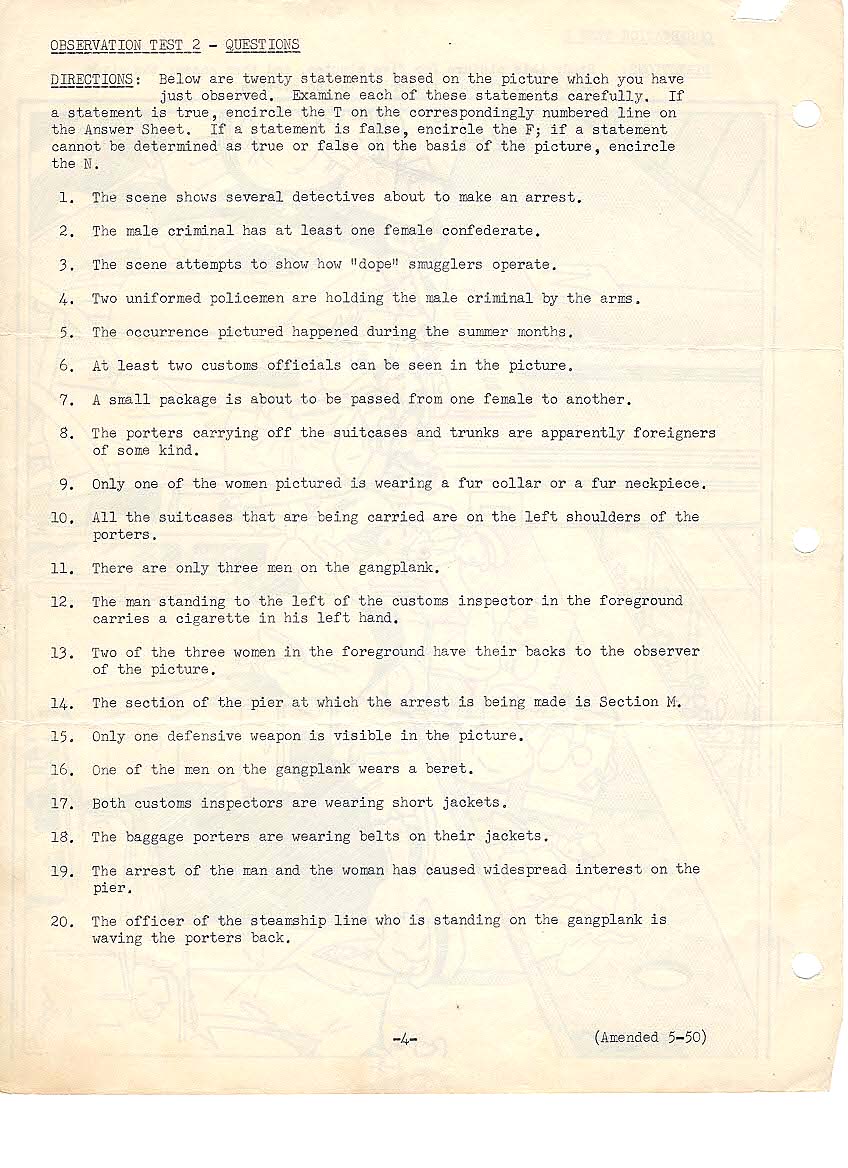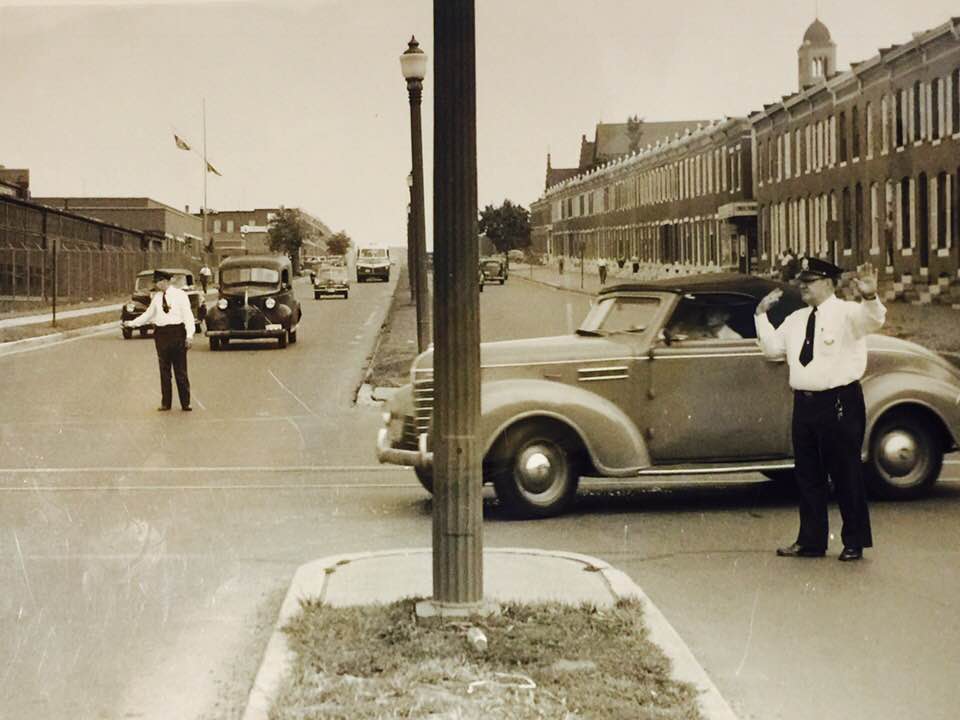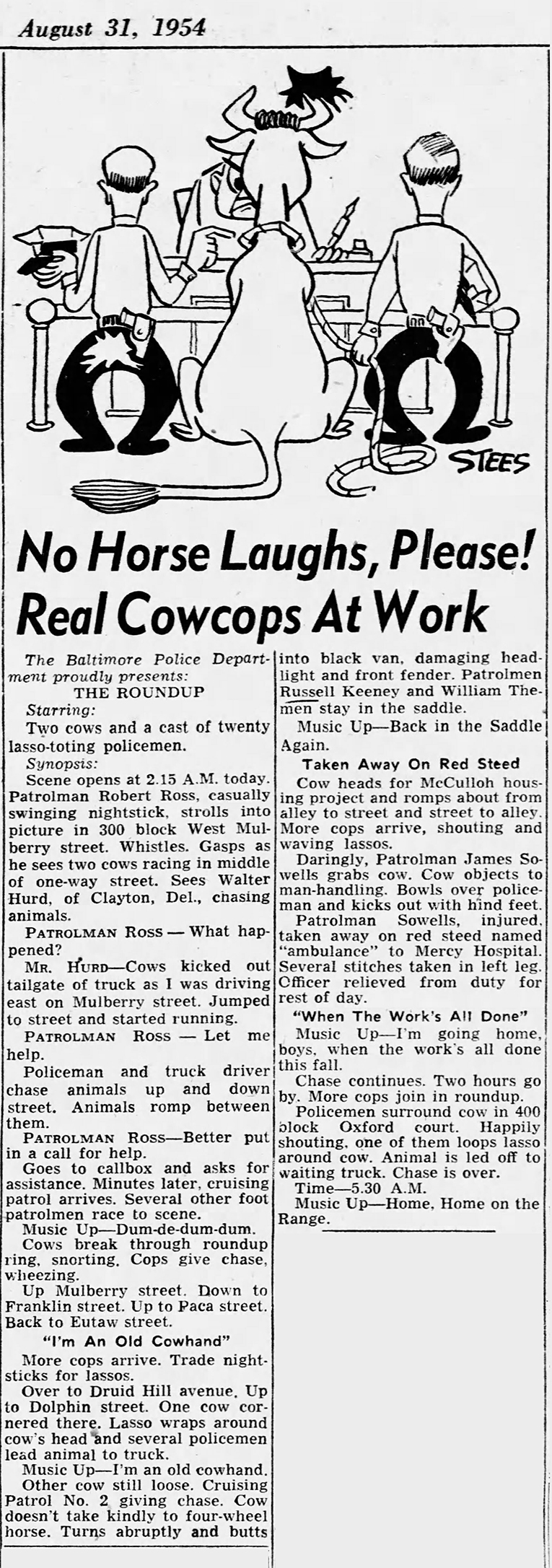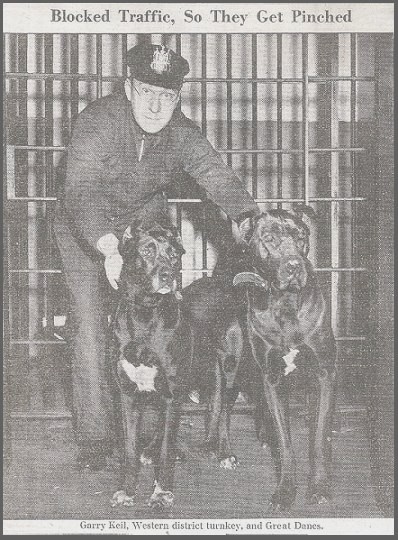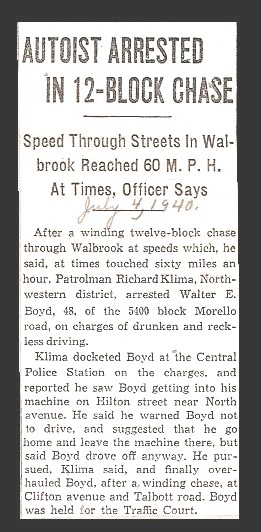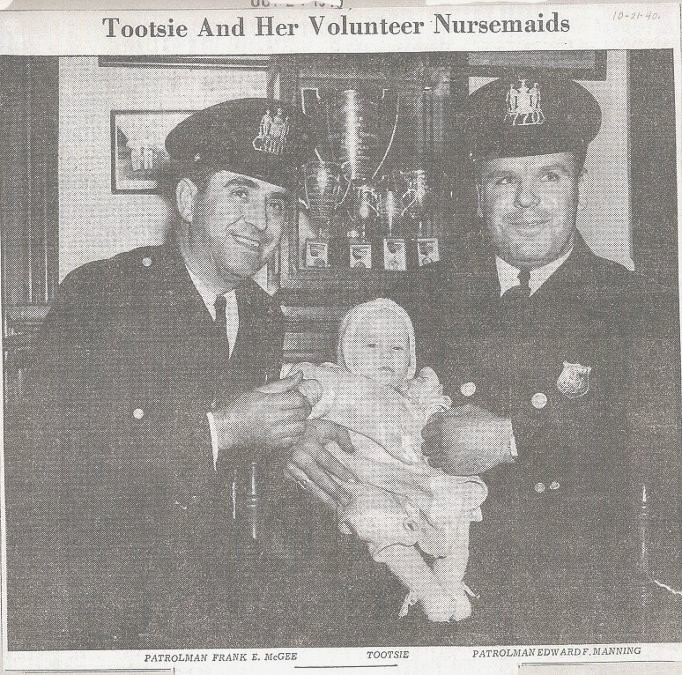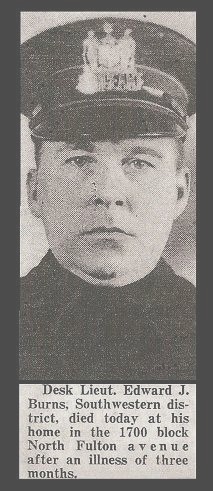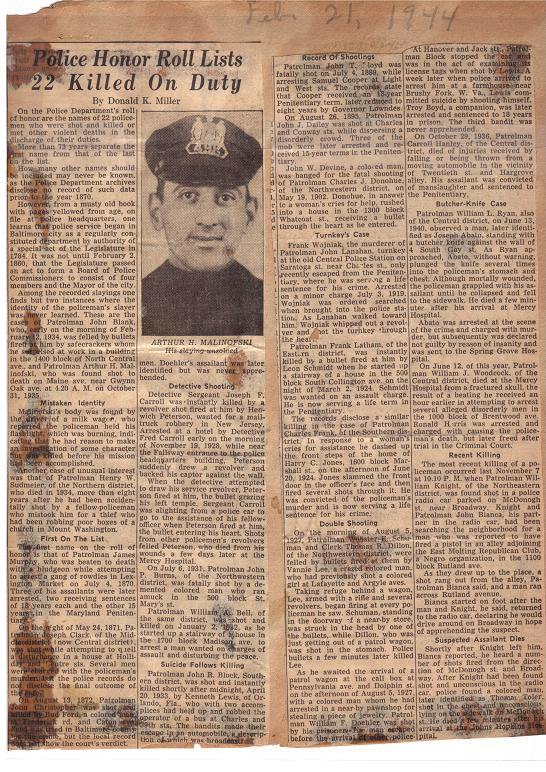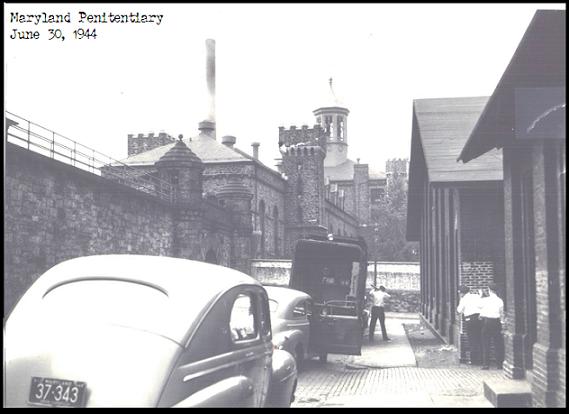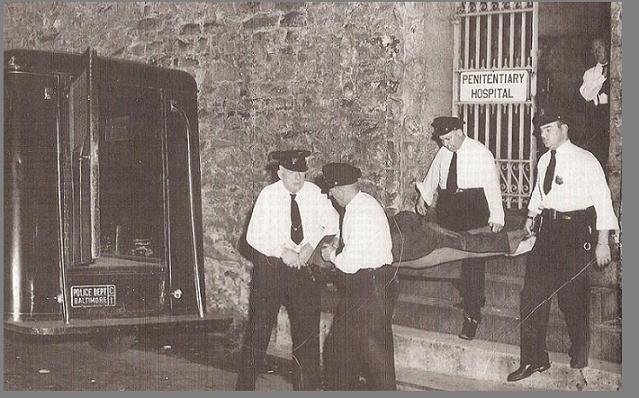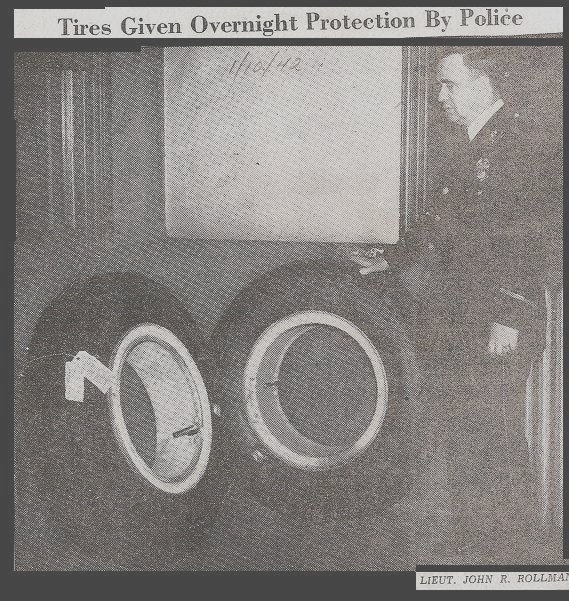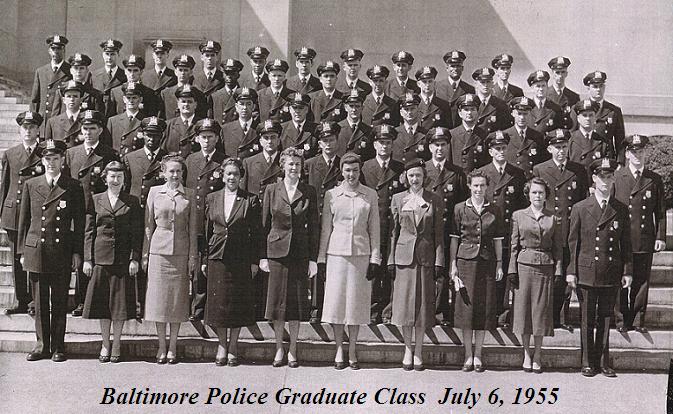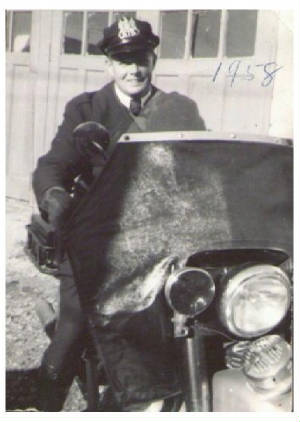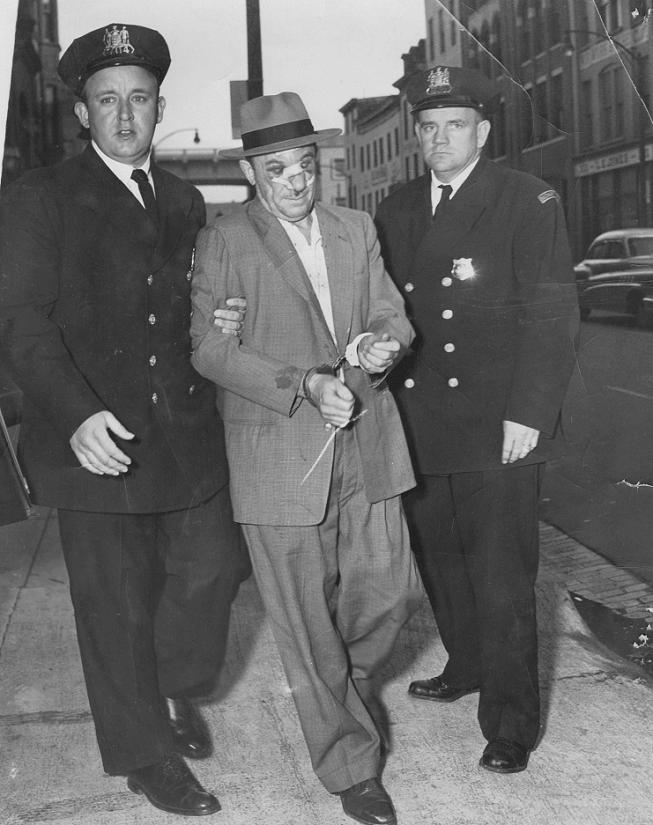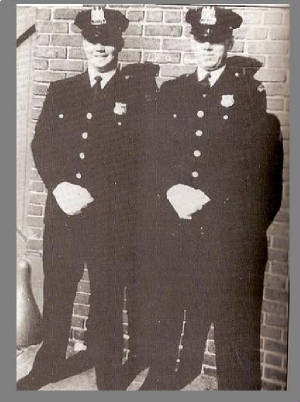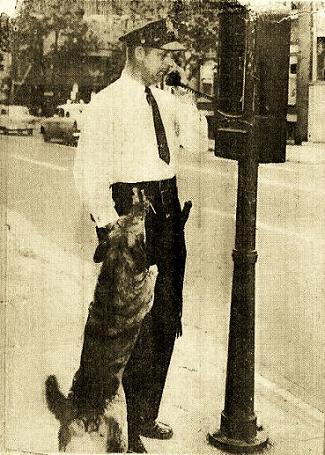
1940 - 1960

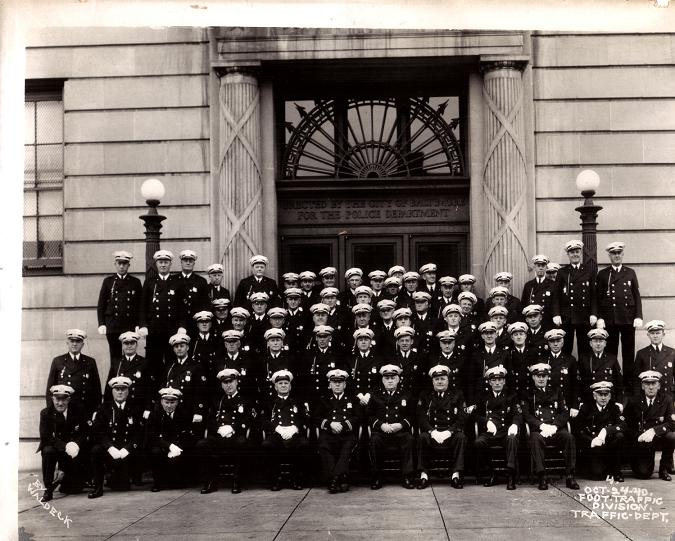
FOOT TRAFFIC UNIT OCTOBER 1940
Baltimore Police display 1940's
Officer John F. Zaloudek 1940's
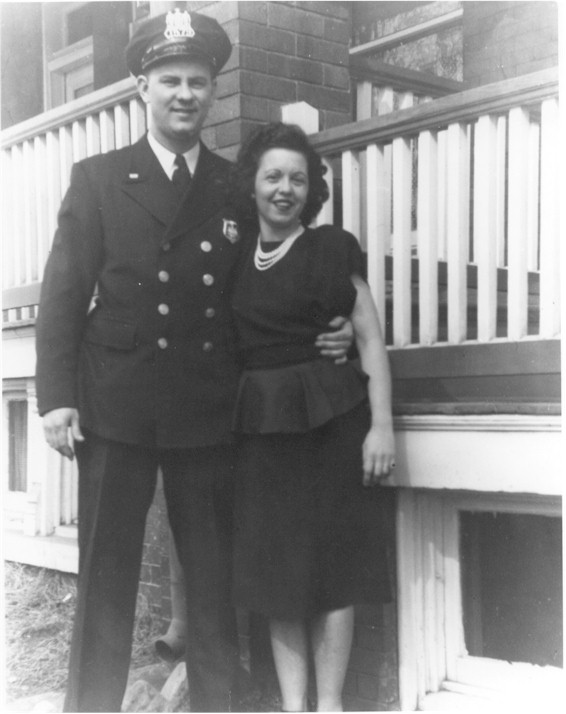 |
| COURTESY JOSEPH PEIGHTEL |
Police Officer Charles R. Ernest (Bud) and his wife Dorothy (Dots) 1940's.
He lived on a little street in South Baltimore called Ramsey Street, and both Bud and Dot’s grew up in that neighborhood.
Bud earned a Purple Heart fighting in the Philippines during WWII but managed to make his way home. He went on to become a Baltimore City Police Officer, and you can see in the picture, that he towered over his wife. Bud was over 6 feet tall. Bud was a huge tease and loved to laugh and make people laugh. He was incredibly detail oriented and organized as you might expect in a Police Officer.
Officer Ernest was struck on Saturday, June 13, 1964, and succumbed to injuries on Wednesday, January 20, 1965. He was crushed between two cars while directing traffic at the scene of an accident at the intersection of Pearl Street and Saratoga Street. Officer Ernest's partner was interviewing the drivers involved in the accident as Officer Ernest was directing traffic around the two vehicles. His partner requested that one of the drivers move his vehicle out of the travel lane. As the man attempted to do so, he inadvertently put the car in drive instead of the reverse. The car lurched forward and pinned Officer Ernest and a citizen between the two cars. Both men sustained broken hips and other injuries. Officer Ernest remained at home on sick leave as a result of his injuries for 221 days. A blood clot, which had formed as a result of the injuries, moved to his heart, causing him to go into cardiac arrest. He was transported to a local hospital where he died a short time later.
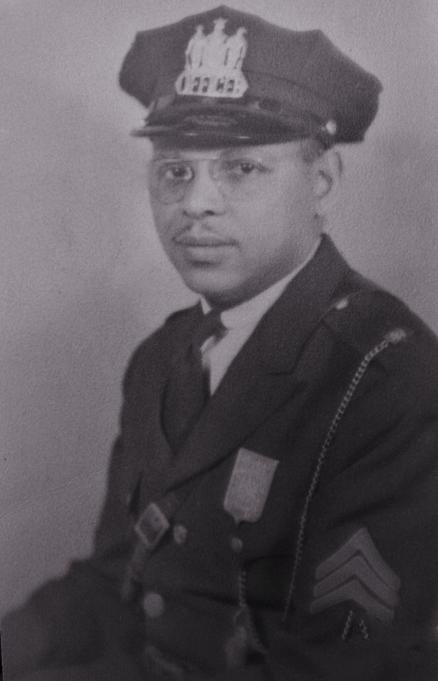 |
| Photo courtesy Norma Spencer Johnson |
Norman T. Spencer, who was one of the first Black detectives on the Baltimore City Police force.
Sgt. Norman T. Spencer seen here as one of the Baltimore Police Special Officers commissioned by the City of Baltimore.
***********************
1940
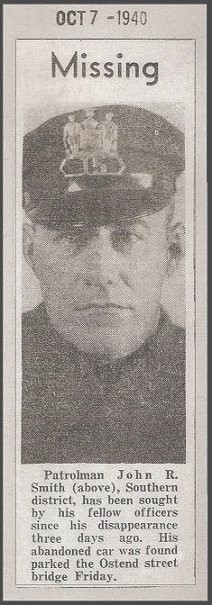
COURTESY OFFICER JAMES McCARTIN
Officer John Smith Southern District

COURTESY OFFICER JAMES McCARTIN
Officer Barton Rictor and Officer Sherman Riggin
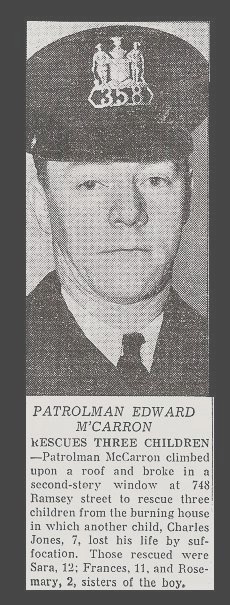
COURTESY OFFICER JAMES McCARTIN
Patrolman Edward McCarron
January 11, 1940
******************************
POLICEMAN STABBED ON STREET, DIES
William L. Ryan, Dying, Fires At Assailant But Misses
Witnesses Capture Man, Who Shouts For "Liberty and Peace”

COURTESY OFFICER JAMES McCARTIN
Patrolman William L. Ryan
STABBING-Patrolman Ryan was fatally stabbed today in the first block South Gay Street. Wilcox, an engineer, brought down his assailant with a flying tackle and helped to hold him until other police arrived. Patrolman William L. Ryan, a member of the Police Department since 1921, was fatally stabbed on Gay Street, near Baltimore, today by a man who was taken to the Central Police Station alternately fighting furiously and praying, "O Lord God, give me liberty and peace." Ryan, lying on the sidewalk, had fired two shots at his assailant, but both missed. The man was brought down with a flying tackle by Perry Wilcox, an engineer, and was held by Wilcox, other civilians and two firemen from No. 1 engine house until several policemen arrived and disarmed him. Butcher Knife Used His weapon. they said, was a butcher knife with a ten-inch blade. At Mercy Hospital, where Ryan was pronounced dead on arrival, it was stated that the blade had pierced his heart. He had suffered three puncture wounds to the chest and abdomen, the hospital report said, in the region of the heart and liver. It was Wilcox who called the officer's attention to the man and the knife. The engineer, who lives at 3303 Northern Parkway, said he had made some purchases at an electrical supply shop at 5 South Gay Street and that as he emerged and crossed the street he passed the man, lounging against the front of Grace and Hope Mission next door to the engine house. "Stabbed Without A Word,"He noticed, that the man had the knife in his hand. "Just as I got to him," said Wilcox, "he asked me, what do you want?' I told him, I didn't want anything and went on down the street. "A little farther, on I met Officer Ryan walking north, and told him about the fellow. Ryan started up to him and I followed. "As Ryan reached him he said, 'What's the matter, and without saying anything in reply the other drew back and plunged the knife into the officer's breast. Then he broke into a run. Shots Went Wide As Ryan lay on the sidewalk with a bloodstain spreading over the front of his clothes, he managed to get his gun out and fired, but the shots went wild. "I ran after the fellow and got him around the knees." Wilcox was having considerable trouble holding his captive and George W. Green, of 4917 Midwood Avenue, several other civilians, and Henry Fidler and Joseph Paulus, firemen from the engine house went to his aid. They said that although their prisoner was a man of only about 140 pounds, he "fought like a maniac and they were unable to get the knife away from him. It was not wrested from him until Detective Lieutenant Louis Kotmair, Sergeant Donald Madigan and Patrolmen Walter Geraghty and John Fox arrived. The officers handcuffed the man and he was carried through a large crowd that had been attracted by the shots and lifted yelling and screaming, into the Central district patrol. Ryan was put into a city ambulance and hurried to the hospital. At the station the prisoner first refused to answer any questions, even to state his name. The police said that in his pockets, however, they found a Social Security card bearing the name Joseph Abato and the address 1427 Gough street. Officers were sent to that address to inquire about him.
Man, Shouts, And Screams
Meanwhile, the police said, he continued to shout and scream incoherently, throwing himself on his knees to pray for "liberty, peace, and life" and begging that his handcuffs and leg irons be removed. Whenever the cuffs and irons were removed the officers said, the man renewed his fight. He is sharp-faced, with brown eyes and black hair, and was wearing a black shirt, dark trousers, and black shoes. "His forehead was cut from his fall when Wilcox tackled him. Talks For Sodaro State's Attorney J. Bernard Wells and Assistant State's Attorney Anselm Sodaro went to the station to question the man and when Sodaro addressed him in Italian, the police said his manner calmed almost instantly and he talked readily about himself. ''He said his name is Joseph Abato and that he has been living in a building in the rear of the Gough street address, working at odd jobs when he could get them and spending much of his time at the Grace and Hope Mission, especially during the evening meetings. Tells His Life Story He was born in Sicily, he said, and was brought to the United States when 2 years old. When he was 4 he went on, his parents disappeared and he was reared in a New York orphanage. During the World War he was too young to fight, he stated but served an army enlistment after the conflict. He is married and has a wife, whom he has not seen for several years, and a 4year old son, in New York. He said. his last regular job was on a tunnel project, on the new Harrisburg-Pittsburgh super-highway, near Chambersburg, Pa. It ended last September, he said and it was then that he came to Baltimore. Patrolman Ryan was 44 years old and lived at 3204 Kenyon Avenue. He was a popular officer and was known to "his acquaintances as "Larry." He was' married five years ago and his survivors, besides his widow, Margaret, are a son, "Larry" Jr. 4 years old and a daughter, Patricia Margaret, 18 months.
***********************************************************************
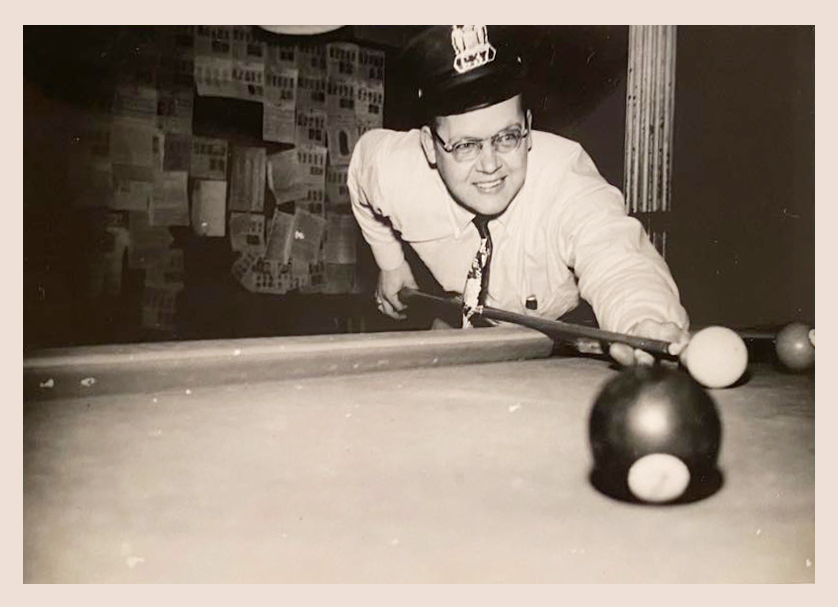
Robert Schueler Sr
Hat Device number C 37
His cap device tells us he was a chauffeur
Based on the information provided in the picture, it is likely that it was taken sometime between 1927 and 1944, as the round hat being worn by Officer Schueler was worn during that period and the Gaither police headquarters building, where the pool table was located, opened in 1927. However, considering the switch from the helmet to the round hat in 1908, it is also possible that the picture predates 1927 if that isn't the gaither building that he is shooting pool in. We didn't have a police shoulder patch until 1952. If this were a coat and not a shirt, it could indicate the picture predates 1952. Except, as was mentioned, this is a shirt, and during the rocker patch period, we didn't have patches on the shirt. So this would before the first full-color patch with the word CITY on it. That would be prior to 1967. However, we have a little more info: his hat appears to be a round hat, not an eight-point hat; we switched from the helmet (Bobby cap) to the round hat in 1908 and wore that until 1944. That would make the picture predate 1944. Sometime between 1908 and 1944, and finally, the pool table was in the old Gaither police headquarters building. Central District was housed in the Gaither building. I think that building opened in 1927, so this is between 1927 and 1944. I am leaning toward a time closer to 1944 perhaps between 1940 and 1944. By analyzing the visual elements in the picture, such as clothing styles, hairstyles, and technological devices present, we can gain insights into the era. Additionally, examining the surrounding environment or landmarks visible in the image can provide further clues about the time period.
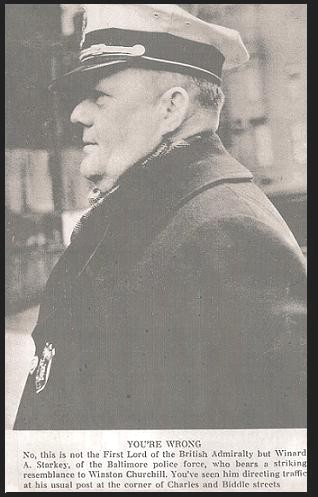
COURTESY OFFICER JAMES McCARTIN
Officer Winard Starkey
March 24, 1940
Courtesy Bernie Wehage
Officers Cochran and Moran at the corner of Katherine and Wilkins Ave
Southwestern District Radio Car Number 72 on 8 April 1949
31 Aug 1954
Officer William Pillsbury
Central District
North Ave and Charles Street
COURTESY OFFICER JAMES McCARTIN
Officer Garry Keil Western District April 24, 1940
Police Give “Royal Suite“
To Frolicsome Great Danes
And Now They Seek Owner Of Pair Of Pair of Dogs That Played Havoc With Traffic If you are looking for two female Great Danes they are being held in protective custody in a cell at the Western Police Station The dogs Were picked up yesterday by Patrolman Arthur C. Boston, of the traffic division, while they were romping in the middle of the intersection of Eutaw and Lexington streets between automobiles moving in all directions. when Boston saw the dogs, he scratches his head and murmured something about “Well. I’ll be… He stopped traffic that was moving all around the dogs and led them to the sidewalk where he looked for the owner. When the owner could not be found, Boston took the dogs to the Western po1ice station and presented them to the desk Lieutenant. The desk lieutenant also scratched his head, murmured something about “Well, I’ll be…… and ordered the dogs to the largest and nicest cell. The dogs were not docketed or searched. Last night Western police attempted to locate the owner of the dogs but were unsuccessful. The po1ice believe the dogs jumped out a parked car. Whenever a person entered the station house last night they were quickly led to the cell block and shown “our very fine guest.” Members of the station house contributed dimes, nickels and quarters To buy bones and raw meat for the dogs’ supper. After the Great Danes had eaten they crawled up on the bench in the cell and went to sleep.


1945
The above suspect James Smiley (15 Years Old) was arrested and held in Baltimore
He is wanted in Michigan for the Murder of his Foster-Mother Mrs. Edna Smiley
She adopted him as a child, they recently argued and he killed her with a .22 Cal. Rifle

Baltimore Police
Don New Chapeau
It may not have been designed by Schiaparelli, but Patrolman Paul E. Harman of the Central District Police Station likes his new chapeau. The dark blue octagonal cap which Patrolman Harman and all-district men on the Baltimore Police force donned at 4 pm on 7 Oct 1944, that replaces the oval-topped cap which has been the style here for a little more than 30 years. “all the men like’em” Patrolman Harman, a native Baltimorean who lives at 3212 Matson street, said, “They’re neater, lighter and they won’t blow off as easily as the old ones.” “Besides, my wife likes mine. She says it’s more becoming, and brother, that’s good enough for me. That a woman ought to know about hat’s she buys enough!” NOTE: In 1886 they went from the "Derby type hat" to the Bobby/Helmet cap, wearing a black bobby/helmet in the winter, and a grey/silver bobby/helmet in the summer. The Bobby/Helmet was worn for approx 28 years from 1886 until 1914, when they switched to the cap just before the above (current cap) it looked similar to today's cap; but was round/oval, that cap was worn from 1914 until 1944 (7 Oct 44) when they switched to the 8 point cap... the current cap of today has been worn since 1944.
 |
| COURTESY OFFICER JAMES McCARTIN |
Baltimore City Police Safety Education Car
Belvedere and Roland Ave.
April 13, 1940

19 April 1950 Dukeland Wilkins Ave
Officer Richard Klima, Northwest District, July 4, 1940
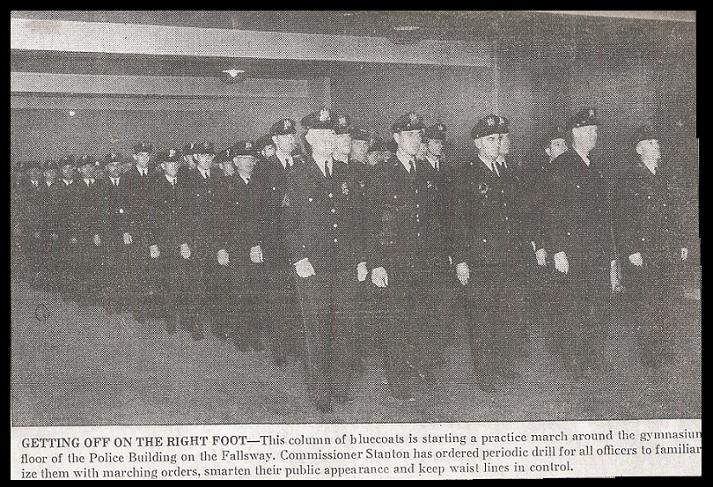
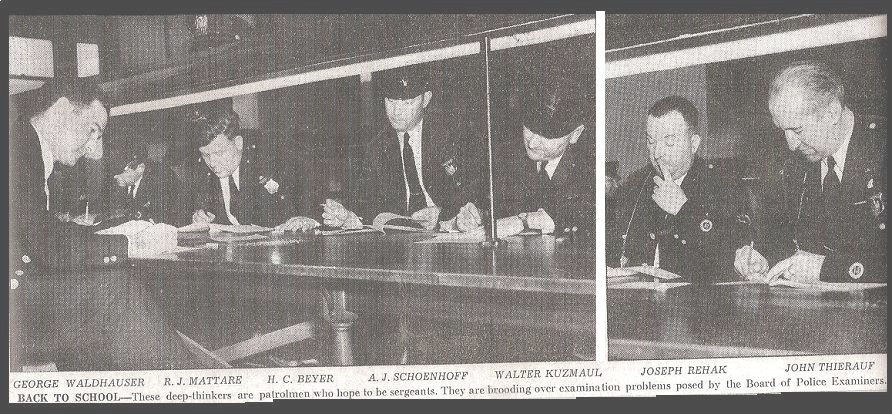
Sergeant Examination September 28, 1940
Officer George Waldhauser, Officer R.J. Matter, Officer H.C. Beyer, Officer A.J. Schoenhoff, Officer Walter Kuzmaul, Officer Joseph Rehak, Officer John Thierauf
October 21, 1940, Western District Officer Edward Manning, Officer Frank McGee, and Lieutenant John Schmidt take care of little Miss Charlene Whitehead, from Long Beach, California, a 6-month-old child left in an automobile while parents went to a movie
COURTESY OFFICER JAMES McCARTIN
**********************
1941
COURTESY OFFICER JAMES McCARTIN
Patrolman Howard Collins
January 2, 1941
 COURTESY OFFICER JAMES McCARTIN Garbage Strike
COURTESY OFFICER JAMES McCARTIN Garbage Strike
COURTESY OFFICER JAMES McCARTIN
Lieutenant Edward Burns, Southwest District
February 6, 1941
***********************************
1942
Photo courtesy Bob Poist
Officer Edward Poist
DOB: 9/6/1905
DOD: 9/16/1956
Graduated from Baltimore Police Academy 1942
Officer of the year 1955
**********************
1943
COURTESY OFFICER JAMES McCARTIN
Officer Milton Gardner, Officer Harry Scott, Officer James Butler
June 12, 1943
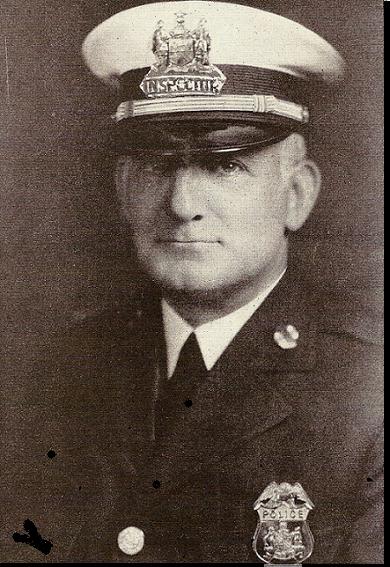
An Instructive Address to the Assistant Buyers Club
By Inspector Joseph H. Itzel
December 1944
A particularly instructive and factual address carrying many little-known facts having to do with the activities of the Baltimore Police Department was delivered on November 30 by Inspector Joseph H. Itzel before the Assistant Buyers Club. A digest of his remarks is given herewith It is a privilege and pleasure indeed to address the members and friends of the Assistant Buyers Club of Baltimore's Retail Stores, in representing your law enforcement agency. In these critical days when the question of law enforcement on the home front is of such major importance, may I take this opportunity to thank you and express my appreciation for the spirit of friendship, cooperation and your interest in your Police Force? We hope you will know us better and become more intimately acquainted with our problems and activities. While it has not been my good fortune to meet you all personally, nevertheless I do feel intimately associated with you through my acquaintance and friendship with my good friend Mr. James P. Burnside, your president. The Police Force is maintained by municipal funds and under the control of the State. This system is in force in only three of the ten largest cities in the country-Boston, St. Louis and Baltimore. The first (non-paid) "VOLUNTEER CONSTABULARY" of Baltimore was created in 1729, the citizens having been driven to this exigency by the alarming depredations of a swelling lawless element. The first "SALARIED WATCH AND PATROL" was created by the Maryland Legislature in 1784. From 1784 to 1860 the Force had been under the control of local officials. In 1860 the Legislature enacted a law placing the department under State control. Today, for the first time, we have a man from the ranks-Honorable Hamilton R. Atkinson, a former Police Inspector. You must remember that police work today covers a broad field of highly specialized pursuits, and to direct as a Police Commissioner must, he must understand them. He must have special qualifications. He must have developed a broad concept of police work, must have an administrative ability, foresight, integrity and physical vigor, professional training and show leadership over a large group of subordinates. The Commissioner has demonstrated successfully this responsibility. It is impossible to encompass within the scope of this summary all of his achievements since taking over command of the Police Department fifteen months ago. Reference, however, is made to several outstanding improvements which are characteristic of Commissioner Atkinson's administration.
JUVENILE PROTECTIVE BUREAU
On January 17, 1944, the Commissioner established the Juvenile Protective Bureau for the purpose of attempting to curb juvenile delinquency and to exert a measure of protective influence in preventing delinquents acquiring court records. Through its instrumentality, the juvenile case is placed in the proper channel for adjustment when necessary and both child and parent are counseled along corrective lines to prevent a repetition of the complaint.
The following is a breakdown of cases showing the activities of the Juvenile Protective Bureau from the Bureau's inception to September 30, 1944:
Involving adults ………………….....14
White Males ..………………….. ..428
White Females…………………….80
Colored Males………………….. .301
Colored Females...........................166
Total….............................................989
Under 10 years…………………...256
10 to 15 yrs. Inclusive……………686
16 to 20 yrs. Inclusive……………..33
Adults……………………………....14
Total……………………………….989
During 1943 throughout this nation 3,785 serious crimes were committed each day-this meant that one out of every twenty-one American homes was a victim of the crime toll. But tragic as that is, it is not our greatest tragedy. The real tragedy in these figures is found in the rising number of youthful offenders. Arrests of boys under seventeen years of age have increased thirty percent since the outbreak of the war. All of our war casualties are plainly not battle casualties. The most positive view is, that we should quit trying to cure juvenile, delinquency by correction and begin curing it by prevention. Prevention means giving juvenile wholesome things with which to occupy his or her time. The seriousness of the problem of juvenile delinquency is more clearly seen when it is noted that compared with arrests in 1941, the figures for 1943 throughout the United States show that arrests of girls under 21 years of age increased 130.4 percent. Juvenile delinquents have created the greatest problem. In 1943 over two thousand persons. under seventeen years of age were sentenced in this nation and the greatest part of these were boys. These figures indicate that the factors contributing to delinquency are still very powerful and point to the need for each community to intensify its efforts to stop the rising tide of delinquency and juvenile crime. All of the constructive influence which an aroused community can provide are urgently needed to combat this menace to our internal strength. Youth today is seeking sympathetic response, recognition, security and new experiences. Any worthwhile youth program cannot overlook the fundamental human desires, for our failure to satisfy all or any of them is a barrier to the development of good citizens. Young people know what they like and the great majority of them adhere to decent things. We must strengthen the "HOME" in every way possible for the primary responsibility for the care and protection of our boys and girls and this must rest within its four walls. Youth is our greatest national asset. We dare not waste it. The watchword should be that of ALERTNESS AND CONTINUOUS UNITY OF ACTION
Too many American communities and fathers and mothers are trying to blame the war for the prevailing, growing and menacing wave of juvenile delinquency. Parents concentrate altogether too much energy and thought on making money. They have no time for their children and little influence over them. It is adults who raise or lower moral standards-children merely reflect the change. After the war, all that can be shown for the big paychecks will be a wrecked home. A sympathetic understanding of the problems confronting these children is necessary. This protective element is paramount in our Juvenile Protective Bureau. Our mission will be fulfilled. No father or, a mother has a right to evade their responsibilities.
This department is keenly aware of the great responsibility which, by law, rests upon it to protect from harm the lives, liberty and property, day and night, of more than one million persons in their homes and their livelihood. We are severely taxed with many burdens, and one of the principal problems is a crime. In the face of a considerable influx of people and an acute housing shortage, it would seem to be especially gratifying, and indeed, incredible that decrease of 8.09% (796 cases) serious crimes was reported in 1943 as compared with 1942. Arrests in 1943 show a percentage of 50.8%.
I respectfully submit statistics of serious offenses reported in 1943 as compared with the number in 1942.
Offense 1942 1943
Aggravated assault…… 165 179
Manslaughter………… ... 8 6
Murder………………… 108 96
Rape…………………… 79 95
Carnal knowledge……...13 14
Larceny……………...6,505 5,314
False pretense……..... 339 325
Embezzlement…………72 46
Robbery………………588 682
Burglary……………..1,898 2,225
Forgery………………....62 59
RADIO CARS IN 1943
The radio cars (patrol service) covered 2,479,106 miles during the year and responded to 112,558 calls, as compared with 118,454 in 1942. Members of this division made 10,356 arrests for various offenses including 19 murder; 1,308 for common assault; 153 for assault and cutting; 84 for assault and shooting; 18 for assaulting officers in the performance of duty; 155 burglars; 5,468 cases involving breach of peace; 130 for carrying deadly weapons; 440 for larceny; 106 drunken drivers and 25 for purse snatching. The cars responded to 4,415 accident calls, 3,230 alarms of fire, recovered 386 stolen automobiles and 62 bicycles; removed 454 persons to hospitals and rendered first aid to 25 victims of gas and other poisons.
BOY’S CLUBS
On June 22d, 1944, one of the achievements of our Police Commissioner Hamilton R. Atkinson, as the dedication of the first Police Boys' Club at the Southwestern Police Station. Some 425 youngsters ranging from 8 to 18 years of age had signed up for membership when the new clubrooms were opened by the Police Commissioner, State and City officials. The club is open five days a week from 4 to 9 p.m. The membership is divided into groups competing against one another in athletic contests. They have a program of self-government and select their own representatives to enforce the club rules. There is a library, a completely equipped machine shop for woodwork with metal work equipment to follow. Another club is now being established in the Eastern Police Station.
AUXILIARY POLICE
In December 1941, our Police Commissioner organized an "Auxiliary Police Force," a unit of Civilian Defense Organization, to help make up for the number of active police that would be drawn off to assist in the war effort. More can be found HERE
Newspaper article dated Feb.21, 1944 indicating that 22 Baltimore Police Officers have given their lives in the line of duty
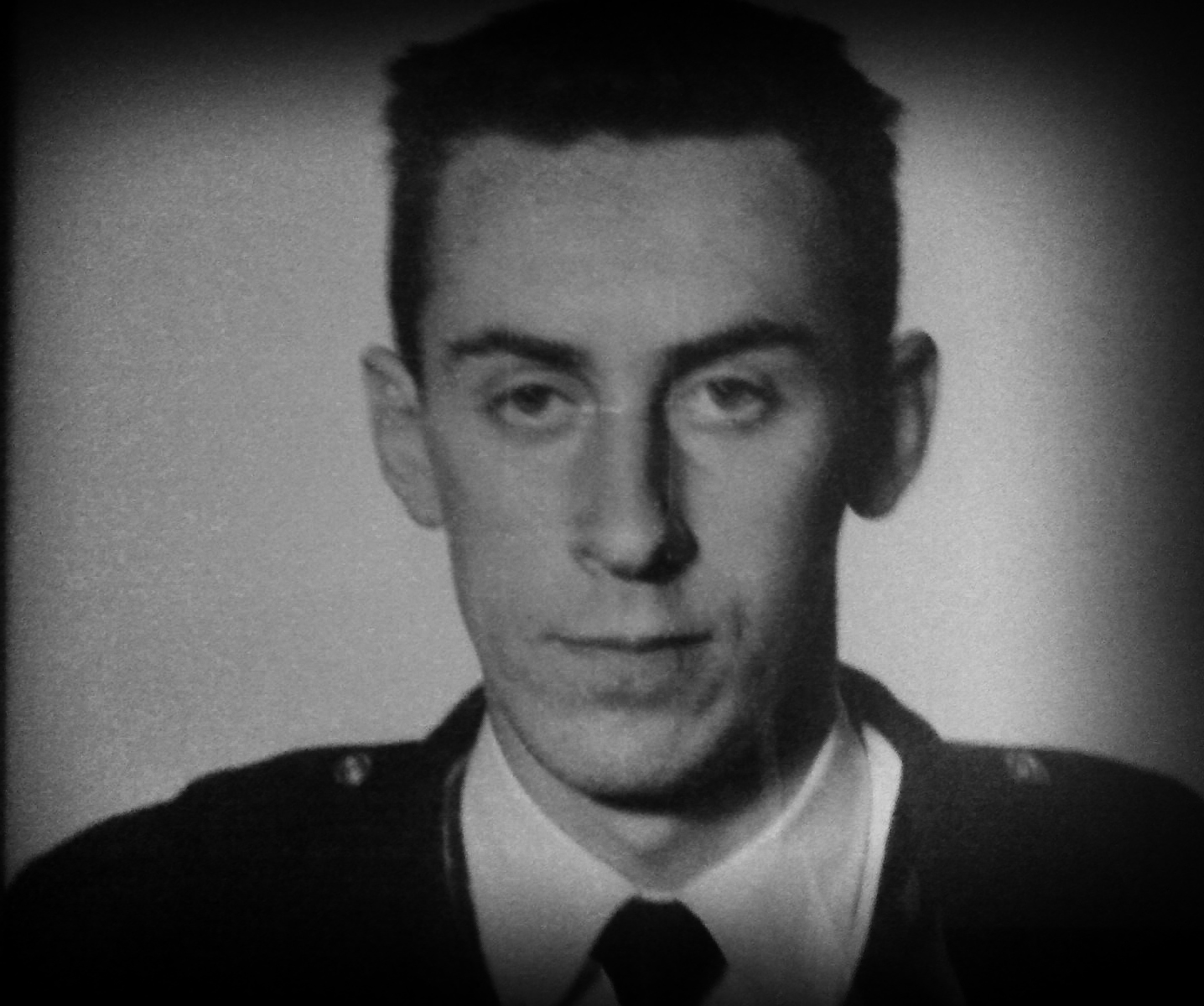 Courtesy Mike O'Hara (Grandson)P/O Eugene "Mike" O'HaraServed with Baltimore Police Department for 30 years
Courtesy Mike O'Hara (Grandson)P/O Eugene "Mike" O'HaraServed with Baltimore Police Department for 30 years
Above Sergeant Henry M. Sinski supervisor of the evidence collection unit in 1948
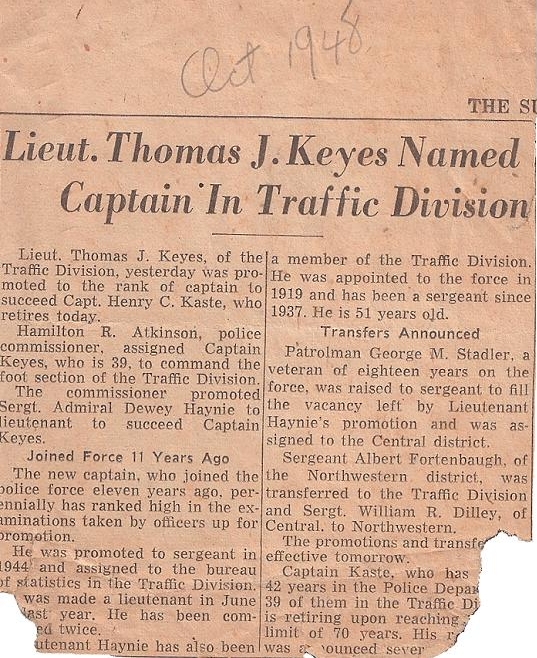 |
| Photo courtesy Tom Bolvari |
Original newspaper article reporting the promotion of Lieutenant Thomas J. Keyes to the rank of Captain and being assigned to the Traffic Division in 1948
Below pictured Thomas J. Keyes as Deputy Commissioner sitting at his desk.
 |
| Photo courtesy Tom Bolvari |
Deputy Commissioner Thomas J. Keys sitting at his desk.
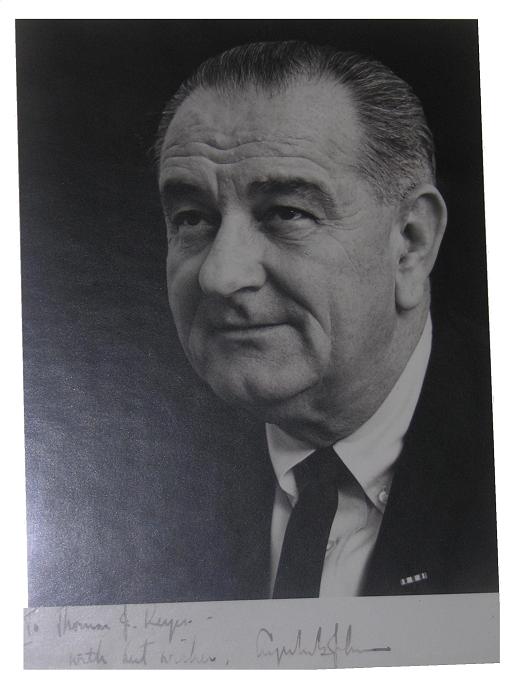 |
| Photo courtesy Tom Bolvari |
Photograph of President LBJ that was personally autographed to Thomas Keyes with best wishes and signed by the President of the United States.
ABOVE, July 8, 1949, following the hanging of
Ray Arnold Woods for the murder of
Baltimore Police Officer Joseph Benedict,
Alfred H.Fischer (officer with the badge)
witnessed the hanging and helped transport
the body to the morgue
Lieutenant John Rollman
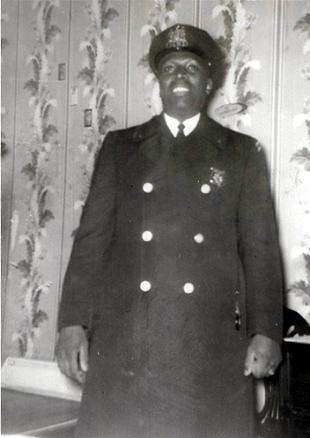
Officer Julius Richburg 1950's
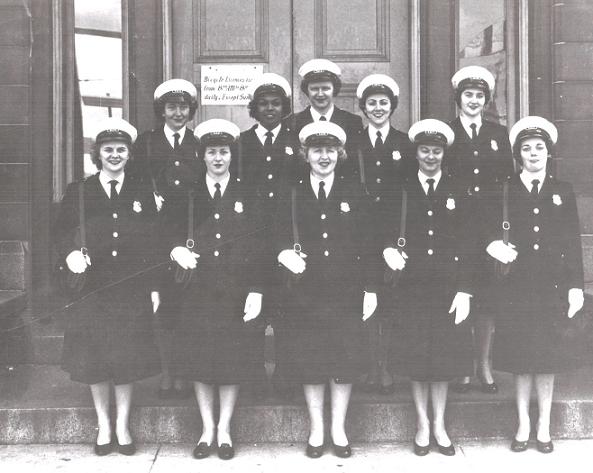
BPD METER MAIDS 1950'S Photo courtesy Lt. William BowenCaptain Elmer Z. Bowen (1954)
Photo courtesy Lt. William BowenCaptain Elmer Z. Bowen (1954)
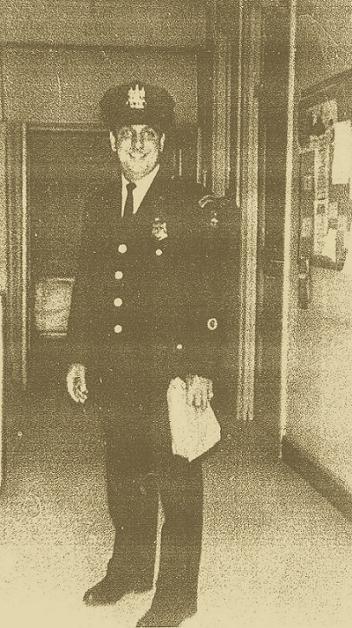
Photo courtesy Officer Melvin Howell
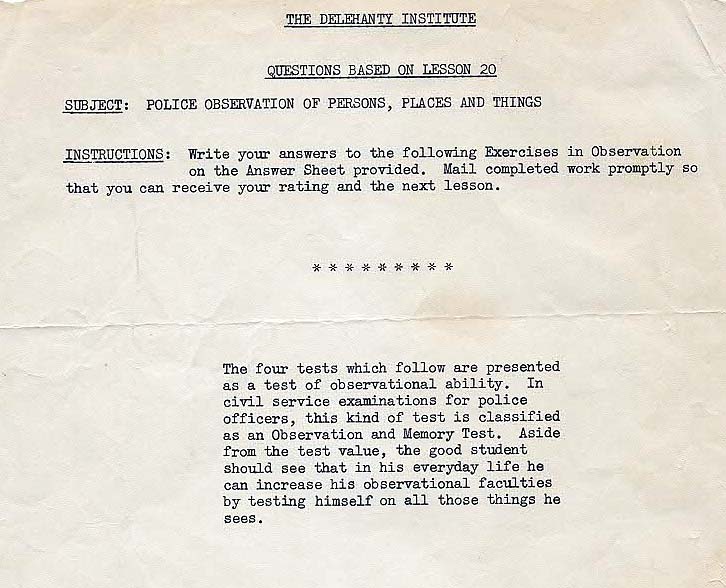
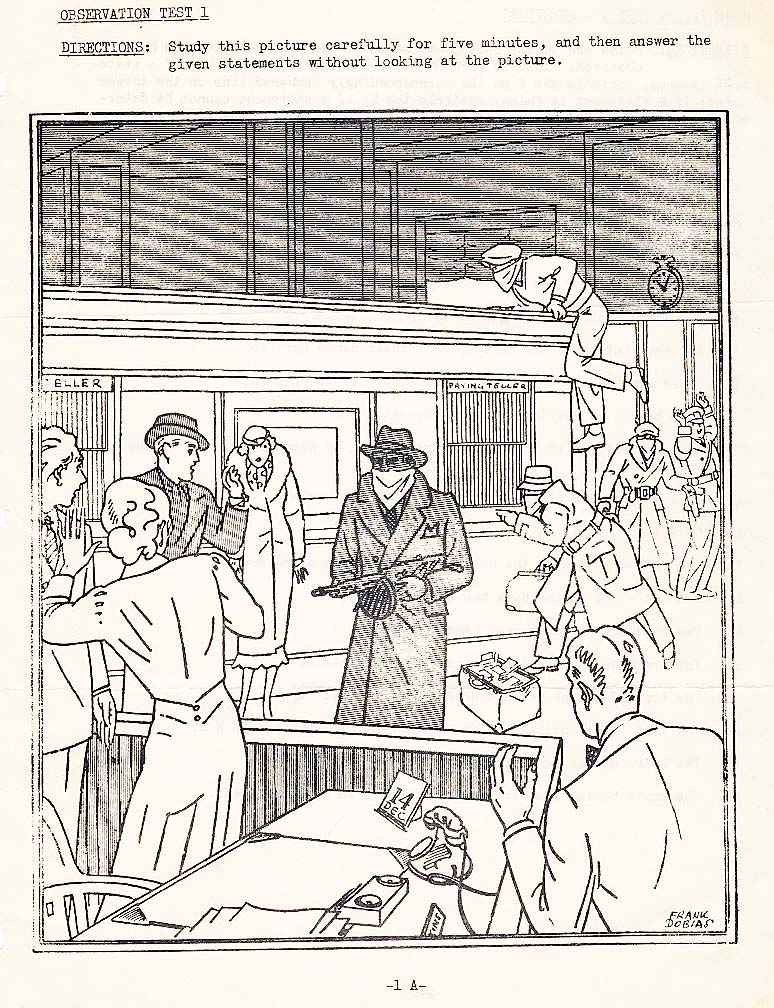
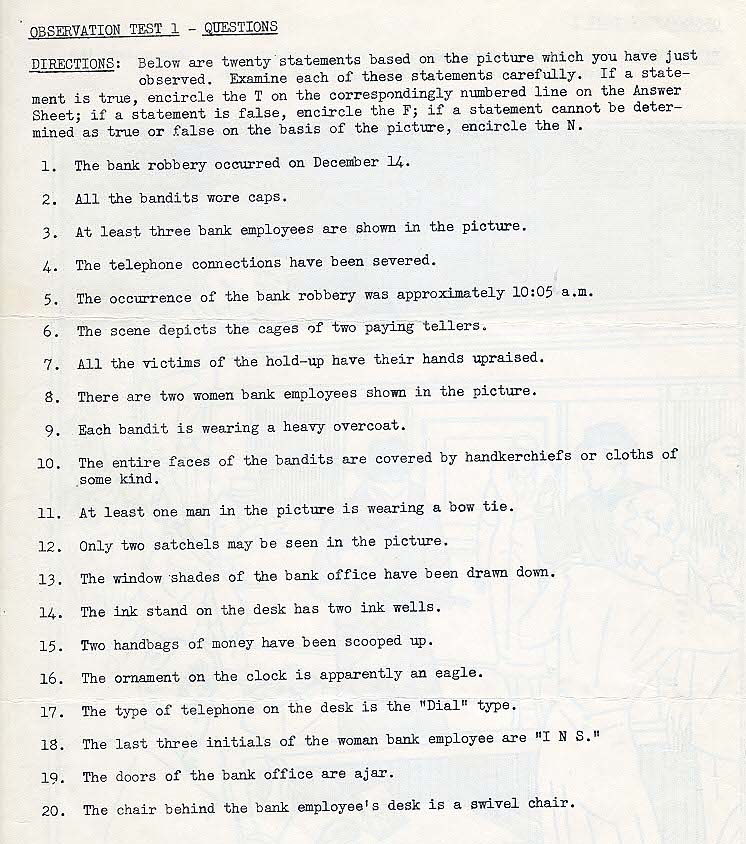
Courtesy Bernie Wehage
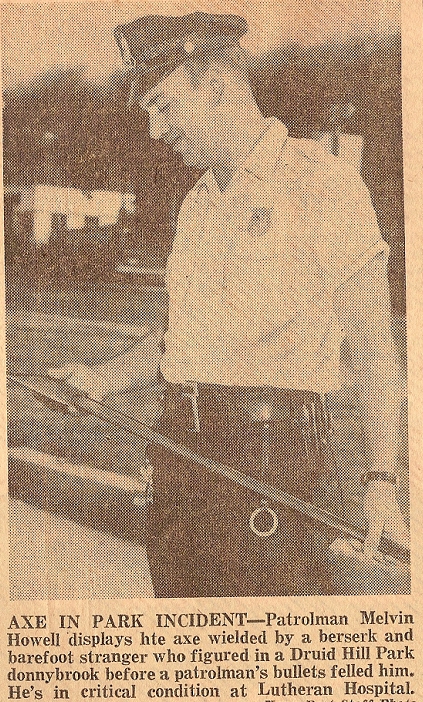
Officer Melvin Howell
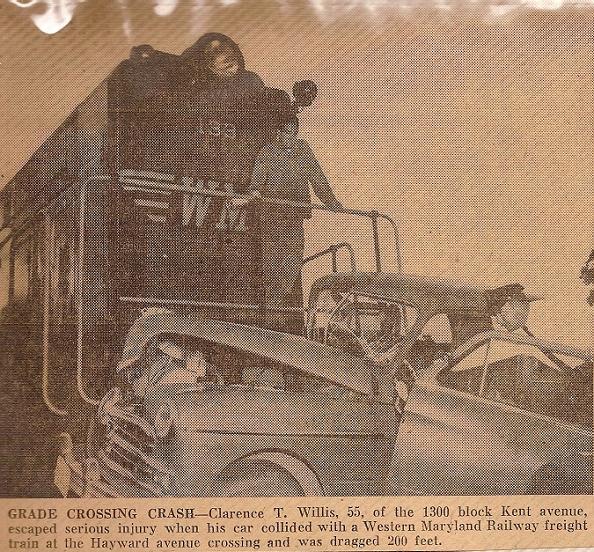 |
| Photo courtesy Office Melvin Howell |
Above Officer Melvin Howell is seen investigating a motor vehicle accident involving a train and below he is assisting with the roundup of some cattle that had escaped from a slaughterhouse.
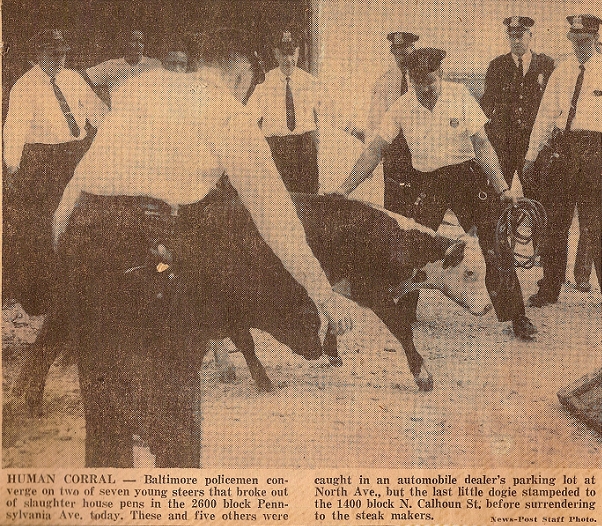 |
| Photo courtesy of Officer Melvin Howell |
CALLED RUN-OF-THE-MINE
Strip-Tease Act Lands Dancer In Police Court
December 1952 It was just a "run-of-the-mine strip-tease act," according to Defense Attorney Joseph F. DiDomenico.But to a policewoman and four policemen it was something more than that--enough, in fact, to justify a charge of presenting an indecent show against Mrs. Carmen Benton, thirty-three, Mrs. Benton, who lives in the 700 block Reservoir street, was arraigned Wednesday before Magistrate William F. Laukaitis in Central Police Court. She let Attorney DiDomenico do the talking for her.THE VARIOUS policemen did some talking too. Patrolman George Fink of the police vice squad testified that Policewoman Miss Betty Riha and Patrolman Kenneth Runge dropped in at a cabaret In the 600 block East Baltimore street Tuesday night and were much intrigued by a dance presented by Mrs. Benton. They were so interested, in fact, that after seeing only part of the show they phoned for Patrolmen Fink, John Livesey, and Melvin Howell to join them. The three vice squad men lost no time in hurrying over from headquarters.AFTER THE dance, Mrs. Benton was arrested, and Mrs. Catherine Darrell, forty-six, one of the proprietors of the club, also was charged with permitting an indecent show to be presented. There was some testimony about a brassiere Mrs. Benton wore or didn't wear, but Defense Attorney DiDomenico denied it had been removed. Magistrate Laukaitis postponed the case until Saturday morning to permit the defendants to produce witnesses who would say Mrs. Benton's dance wasn't indecent----that it was just of run-of- the mine strip act, as Mr. DiDomenico.

Weigh Charges Attempt Escape Attempt In Courthouse
September 29, 1964
Authorities are considering escape charges against a Patuxent Institute inmate who broke from custody and threw the courthouse into an uproar yesterday. Bullets ricocheted in the marble halls as a guard fired three warning shots into the ceiling when the prisoner broke away from him on the fourth floor and ran down the stairs toward the building's exit. Osborne Eberhart Hedges, 22, of Glen Burnie, was captured by guards and city police after he tripped and fell at the northwest corner of St. Paul and Fayette Sts.HEDGES had just heard himself pronounced a defective delinquent by Judge Michael J. Manley and was committed to Patuxent, where he had previously been for examination. As the gunfire reverberated through the building, judges locked themselves in their chambers; an assistant state's attorney grabbed a gun exhibit and ducked under a trial table; a stenographer fell down a flight of wooden stairs; people in corridors ran for the nearest cover, and women screamed. Hedges was taken to Mercy Hospital for treatment of injuries received when he was overpowered by his guard, Thomas S. Henderson, and Patrolman Melvin Howell.
**************************************************************
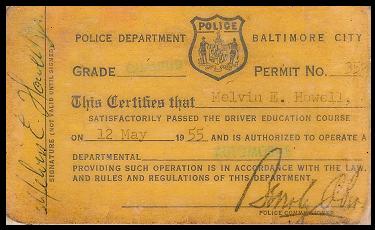 |
| Officer Melvin Howell |
Departmental drivers license issued to Officer Melvin Howell on May 12, 1955.
Officer Howell received the highest score among the others in his class.
 |
| Courtesy Officer John Brazil |
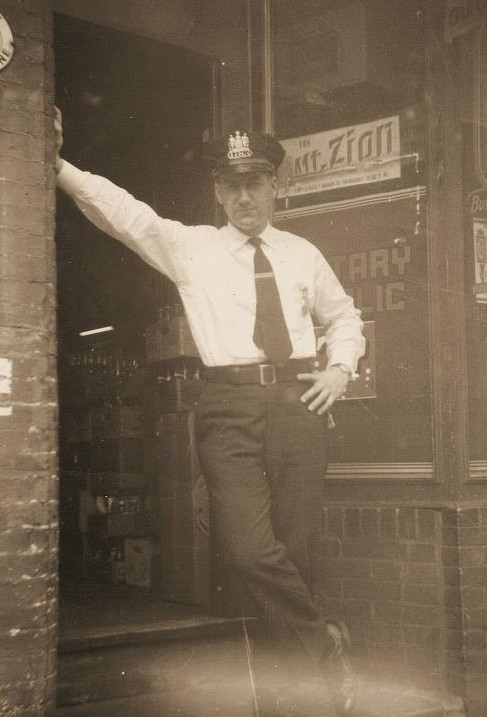 |
| Courtesy Officer John Brazil |
Officer John Brazil poses for a picture, May 1954
(below) Portrait of Officer John Bazil
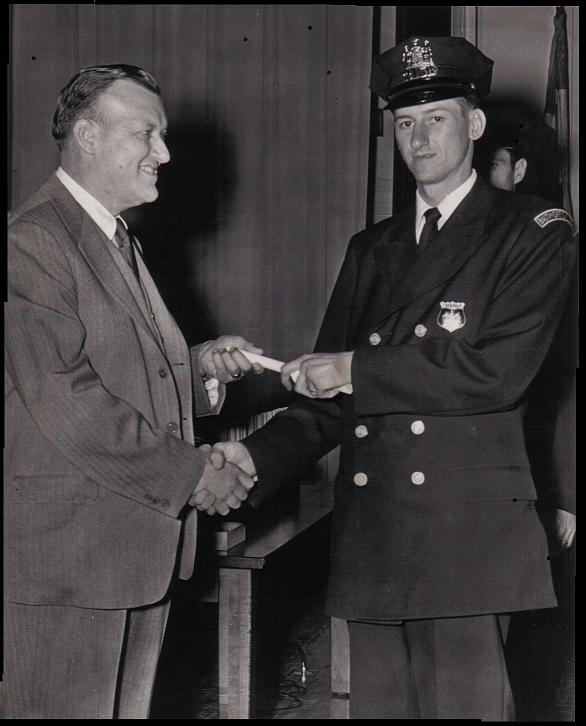
OFFICER RAYMOND STANIEWSKI
JULY 6, 1955
 |
| Courtesy Officer John Brazil |
Officer John Bazil
Officer John Brazil's display of his dad's police equipment.
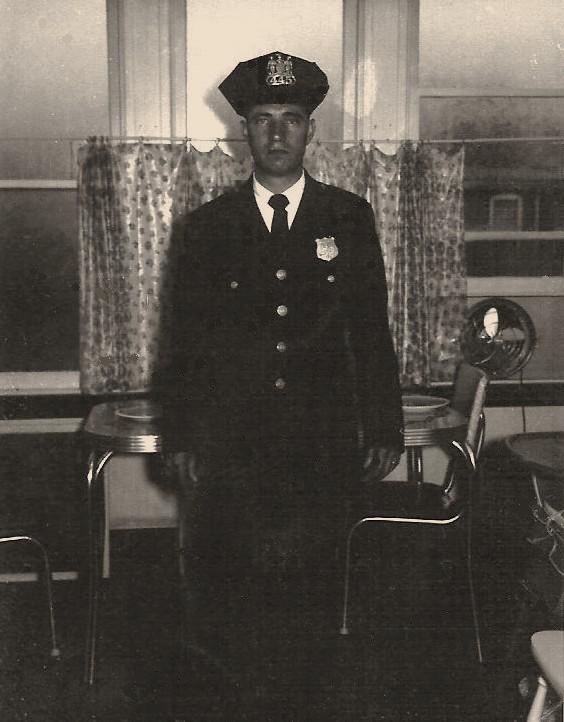 |
| Photo courtesy James Robertson |
Officer Archie Rogers badge # 445
1957
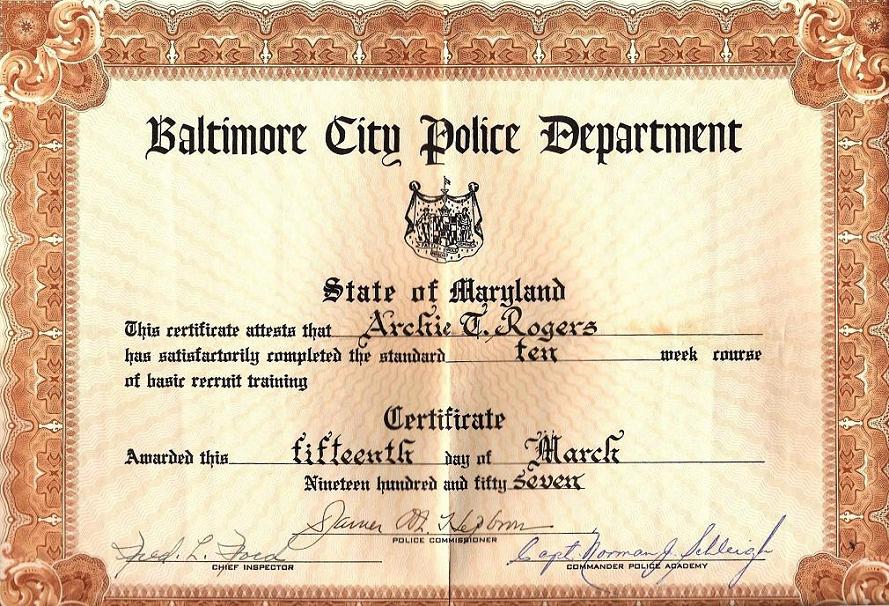 |
| Photo courtesy James Robertson |
Officer Archie Roger's certificate of completion of the police academy March 15, 1957
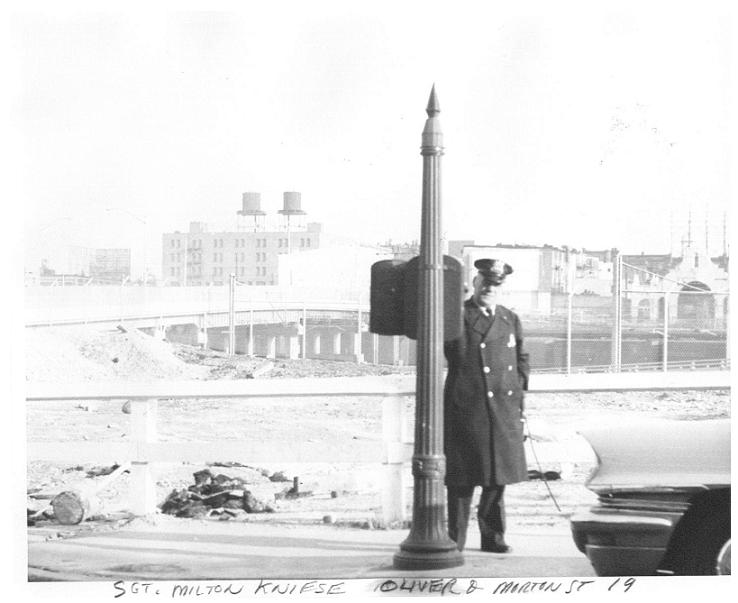 |
| COURTESY OFFICER WILBUR BARTELS |
Sergeant Milton Kniese making a phone call to his station from the call box located at Morton and Oliver Sts., around 1957
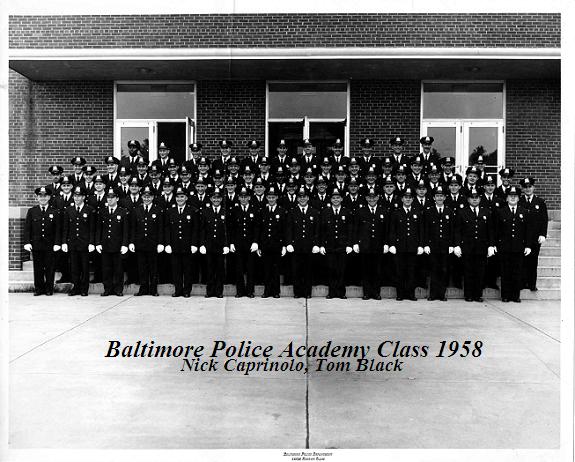 |
| COURTESY RET. SERGEANT NICK CAPRINOLO |
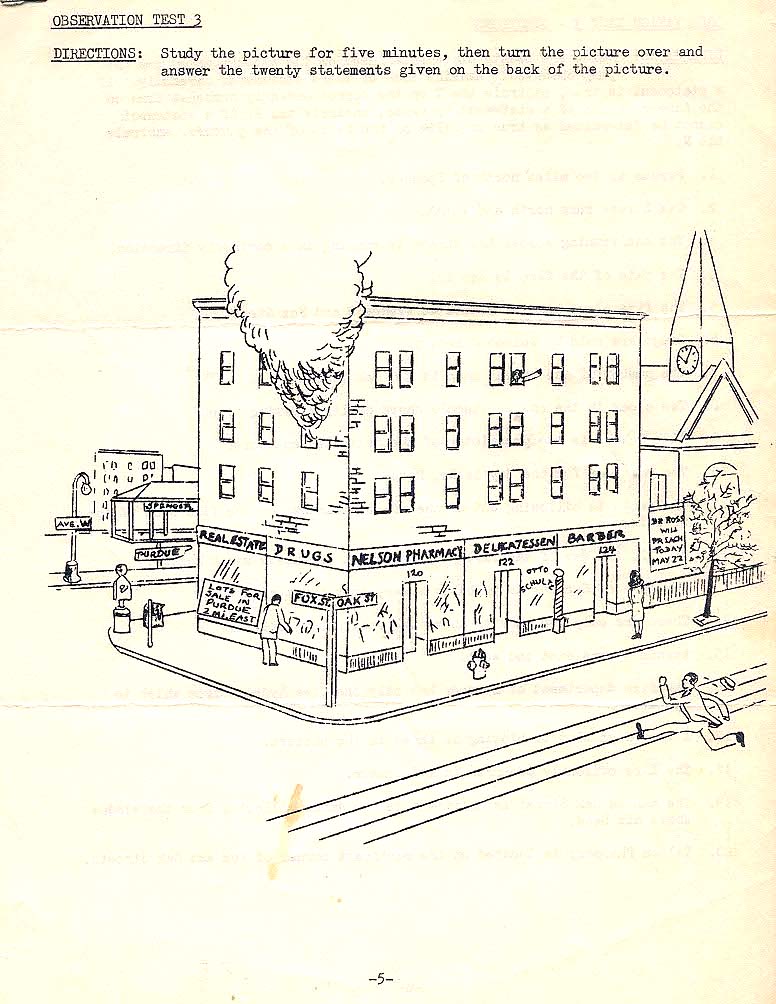
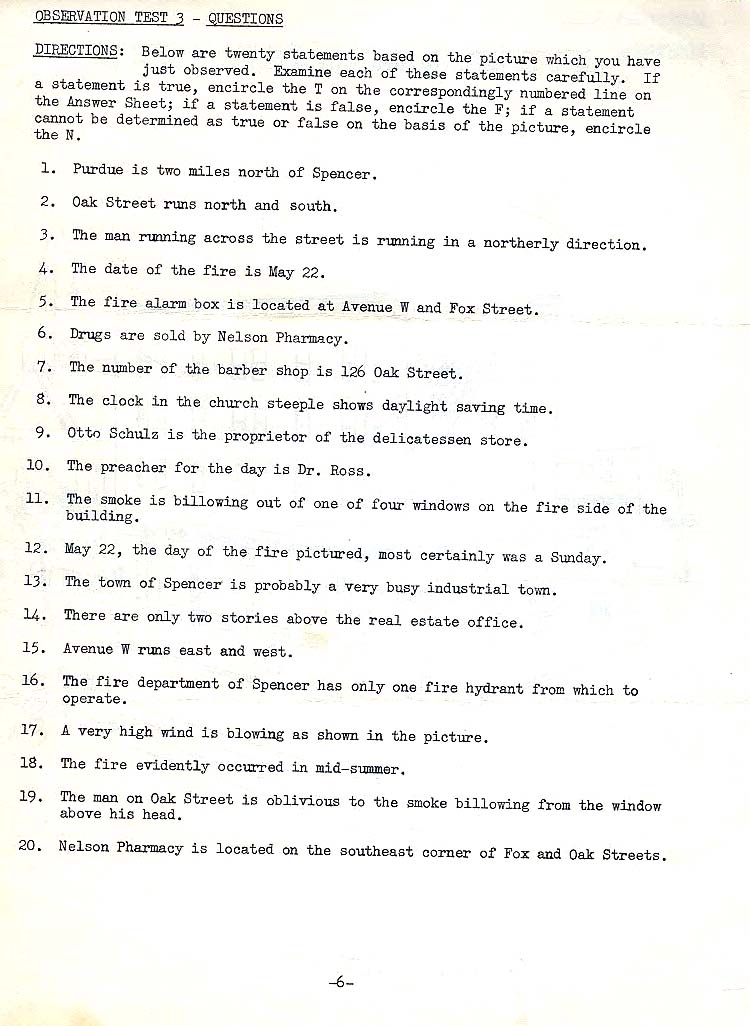
Courtesy Bernie Wehage
Officer John Sinnott, Traffic Motor Division 1958
 |
| Photo courtesy Officer Jim Mitchell |
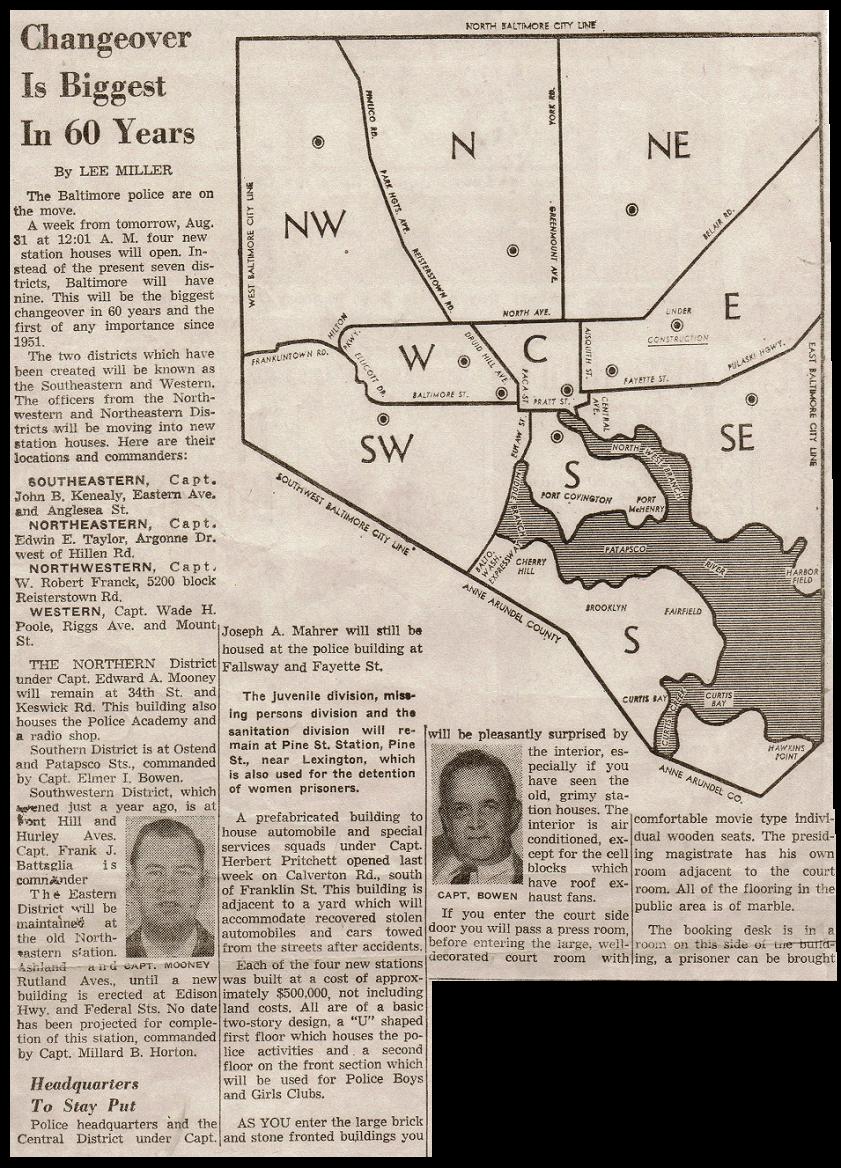 |
| Photo courtesy Officer Jim Mitchell |
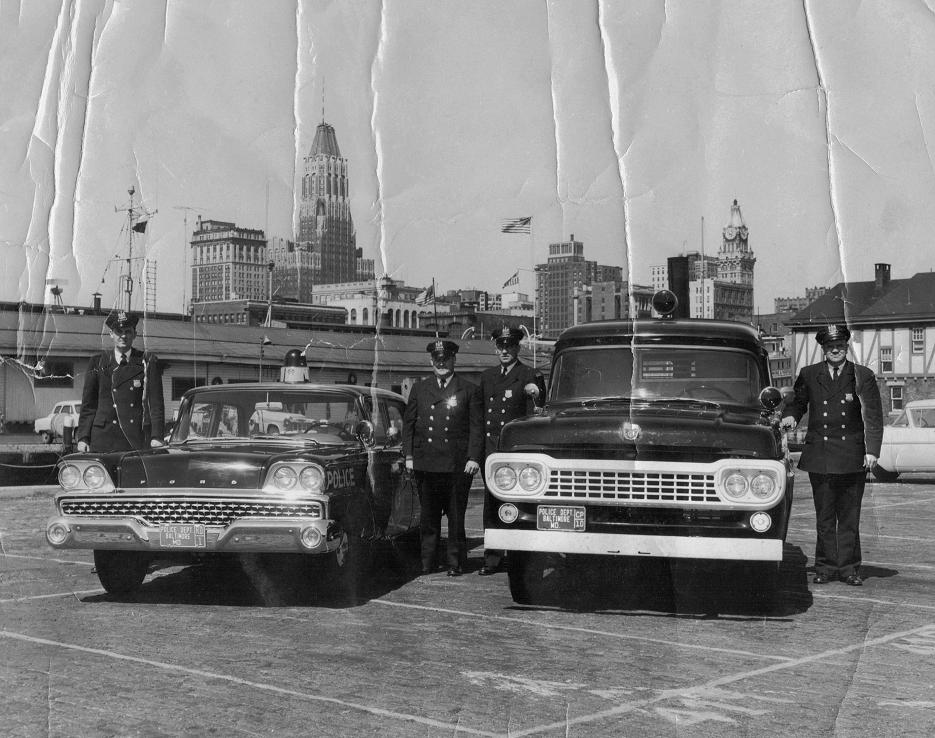
Photo Courtesy James Redding
Officer Clyde Redding escorting a prisoner

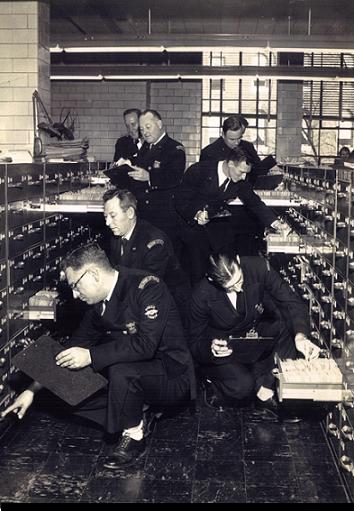
Officer John W. Franks, Northern District
Officer Harold G. Sommer, Southwest District
Officer James O. Miller, Jr. Southern District
Officer Raymond Sadler
Officer John J. Carroll, Northwest District
Officer John H. Sauer, Traffic Division
Officer Edward Porst, Northeast District
Officer Edward P. Dunkin, Central District
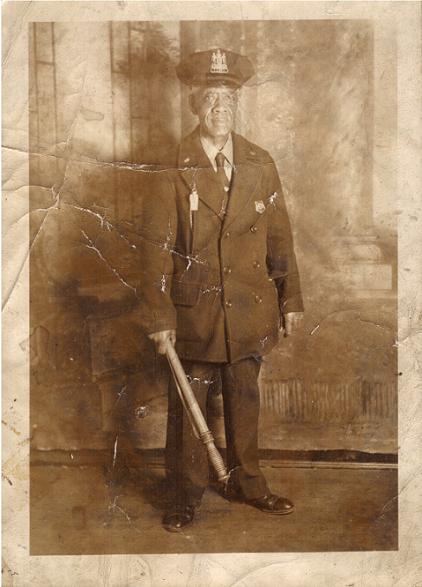
1ST.Black Baltimore Police Officer is marked on the back of this original photograph. We only include it here, because he was an officer, and deserves to have his photo displayed, and displayed here. That said, the hat device is a Baltimore hat device/badge, with a slight difference. His badge is also very similar to the Baltimore badge but also has some differences. His uniform is one of a Baltimore City Officer, having Northwestern collar pins, but the buttons do not appear to be Baltimore Police Buttons. The Hat he is wearing is an 8 point hat, Baltimore Police started wearing Bobby cap/helmets in 1886 then switched to a round/oval hat in 1908, they wore the round/oval hats until 1944 (8 Oct 44), so this photograph was taken after 1944. There is another photo of an officer from behind, dated 1926, it could be this officer, he appears a little younger, and is wearing the round/oval hat. It is possible therefore that he was an auxiliary or special appointed officer of the Baltimore Police Department. No date was indicated in the photograph. All that said, we know he was not the first Black Police Officer as that distinction was held by Violate Hill Whyte, Lt. Whyte joined the department at the age of 40 in 1937, and retired in 1967. She worked Northwestern, and Pine Street's Western District from 6 A.M. until 6 P.M. every night, never missing a single day work, in 30 years, in fact, after retiring in 1967 she continued working for approximately a month and a half to two months while she finished some projects she was working on. Sadly Lt. Whyte passed away in 1980 in a Nursing home on Keswick Ave. God Bless her, she was an amazing lady, and outstanding police, she said two things that I thought were the reason she was who she was, first she said, "I am not afraid of work!" and another things she said, "Being first means nothing, unless you are also your best!" Now this to me was interesting, as the first Police Department in the United States was, Boston; followed by Baltimore, (Some argue New York was second/they're wrong LOL). In Boston the first Irish Police Officer was, Bernard "Barney" McGinniskin, he went on to be one of the best Irish Police in a heavily populated Irish city, had he been the first and been terrible at his job, it would have only brought more negative thoughts for future Irish Police Officers, and those that had negative feeling toward Irish Police in the first place. So what Lt. Whyte was saying,”Being the first means nothing unless you are also one of the best?" I studied statement analysis, and pay close attention to one's words, and in this Lt Whyte, wasn't taking full credit for "HER" ability, she wasn't saying, "Unless I am the best!" which would have been taking full credit, (credit she deserved), this told me, she would have been modest, soft-spoken, maybe even a bit shy. I talked to those that knew her, and my beliefs were verified. Lt. Whyte was that of a soft-spoken, modest, hard-working police; she didn't seek attention for her actions, and in fact, her actions often spoke louder than her. She couldn’t call herself the best, but we can, and will, "she was the best", and as she said, "Being first means nothing unless you are also the best!" She was recognized for her hard work, and dedication to duty... before she was recognized for the color of her skin, or where it ranked in seniority among other officers in the Baltimore Police Department.
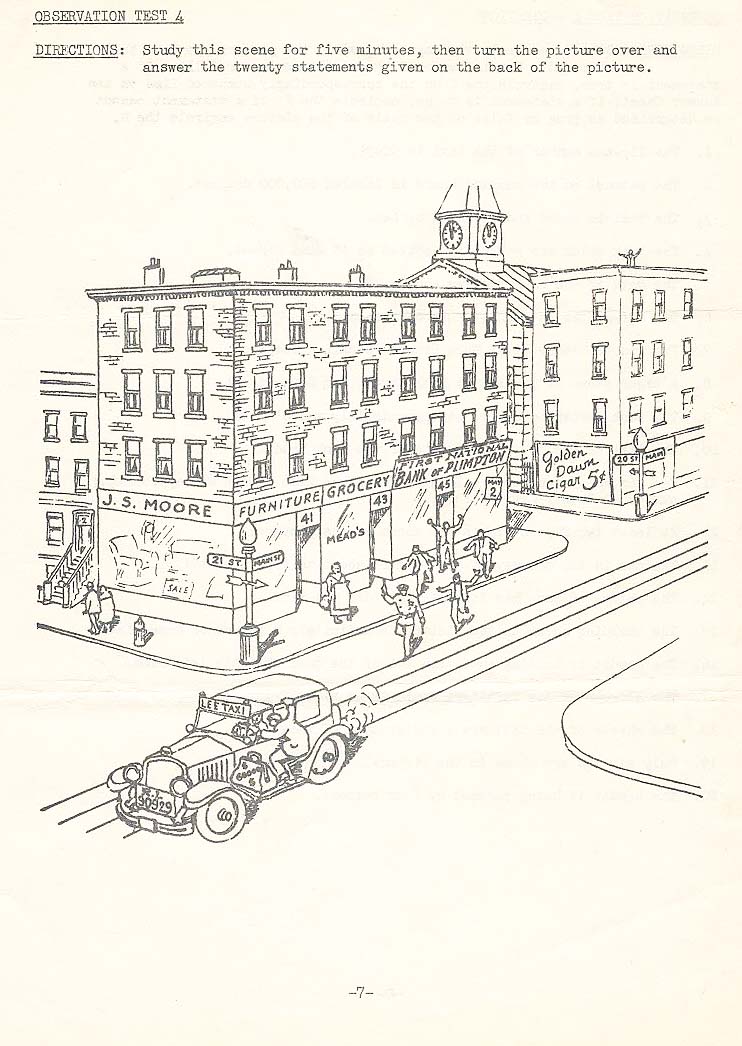
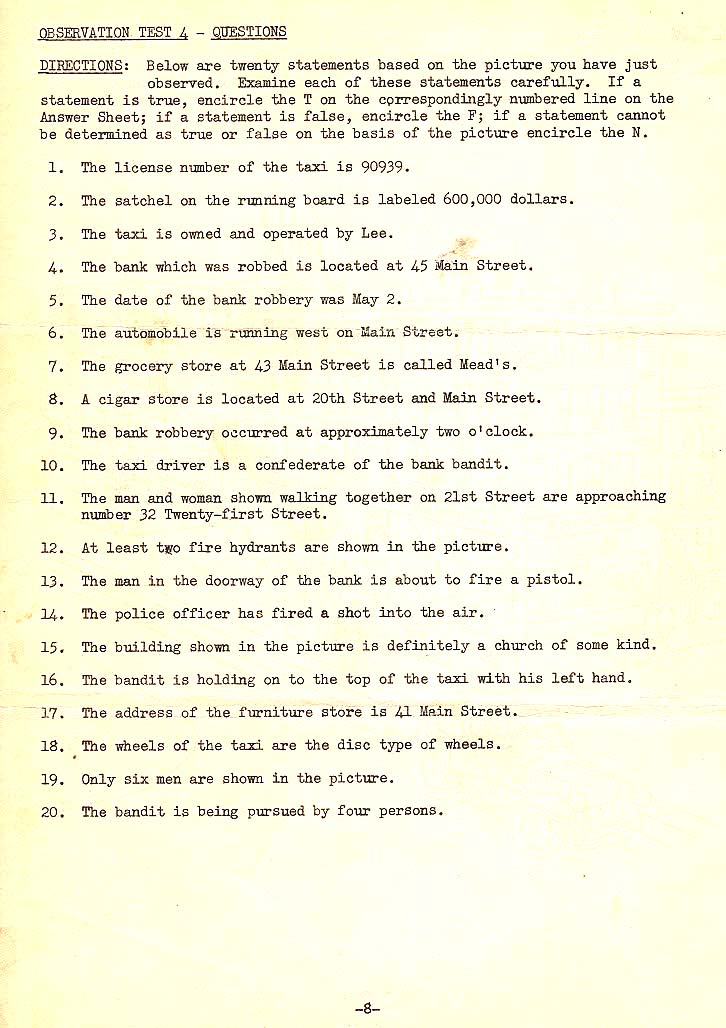
Courtesy Bernie Wehage
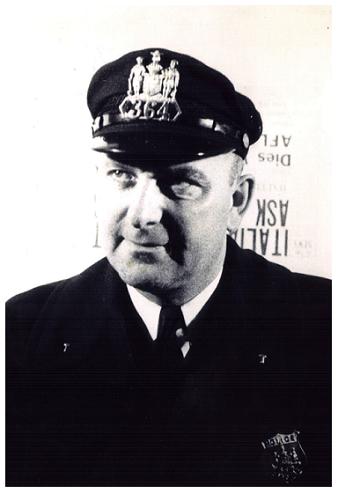 |
| Officer U.B. Huff Traffic Division |
Charles and Wilbur Miller May 1959
Wilbur Miller retired with the rank of Colonel
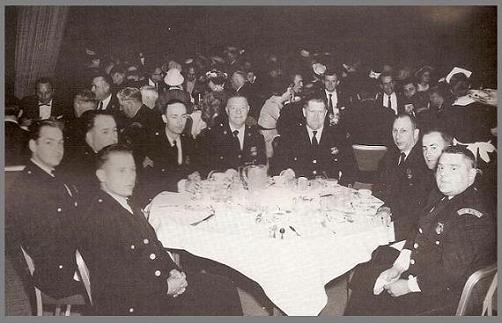

Donations
Donations help with web hosting, stamps and materials and the cost of keeping the website online. Thank you so much for helping BCPH.


POLICE INFORMATION
Copies of: Your Baltimore Police Department Class Photo, Pictures of our Officers, Vehicles, Equipment, Newspaper Articles relating to our department and or officers, Old Departmental Newsletters, Lookouts, Wanted Posters, and or Brochures. Information on Deceased Officers and anything that may help Preserve the History and Proud Traditions of this agency. Please contact Retired Detective Kenny Driscoll.
This email address is being protected from spambots. You need JavaScript enabled to view it.

NOTICE
How to Dispose of Old Police Items
Please contact Det. Ret. Kenny Driscoll if you have any pictures of you or your family members and wish them remembered here on this tribute site to Honor the fine men and women who have served with Honor and Distinction at the Baltimore Police Department. Anyone with information, photographs, memorabilia, or other "Baltimore City Police" items can contact Ret. Det. Kenny Driscoll at This email address is being protected from spambots. You need JavaScript enabled to view it. follow us on Twitter @BaltoPoliceHist or like us on Facebook or mail pics to 8138 Dundalk Ave. Baltimore Md. 21222
Copyright © 2002 Baltimore City Police History - Ret Det Kenny Driscoll















